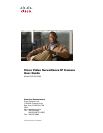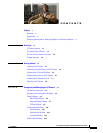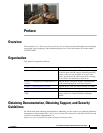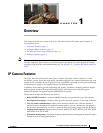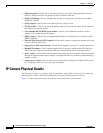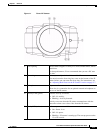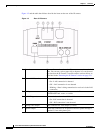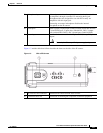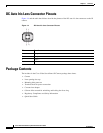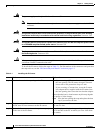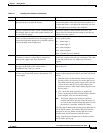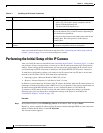
1-2
Cisco Video Surveillance System IP Camera User Guide
OL-14220-01
Chapter 1 Overview
IP Camera Physical Details
• Motion detection—The IP camera can detect motion in up to three designated fields of view by
analyzing changes in pixels and generate an alert if motion is detected.
• Flexible scheduling—You can configure the IP camera to respond to events that occur within a
designated schedule.
• Syslog support—The IP camera can send log data to a Syslog server.
• IP address filter—You can designate IP addresses that can access the IP camera and IP addresses
that cannot access the IP camera.
• User-definable HTTP/ HTTPS port number—Allows you to define the port that is used to
connect to the camera through the Internet.
• DHCP support—The IP camera can automatically obtain its IP addresses in a network in which
DHCP is enabled.
• Network Time Protocol (NTP) support—Allows the IP camera to calibrate its internal clock with
a local or Internet time server.
• Support for C and CS mount lenses—The IP camera supports a variety of C and CS mount lenses.
• RS-485/PTZ support—The IP camera supports Pelco D protocol, which enables PTZ functions
when used with a supported motorized zoom lens, external pan/tilt mount, and control device.
• Power options—The wired IP camera model can be powered with 12 volts DC, which is provided
through an optional external power adapter, or through PoE (802.3af), which is provided through a
supported switch.
• Camera access control—You can control access to IP camera configuration windows and live video
by configuring various user types and log in credentials.
IP Camera Physical Details
The IP camera includes a reset button, built-in microphone, status LEDs, several ports for connecting
external devices, and two threaded mounting holes, one on the bottom and one on the top.
Figure 1-1 and the table that follows describe the items on the front of the IP camera.



